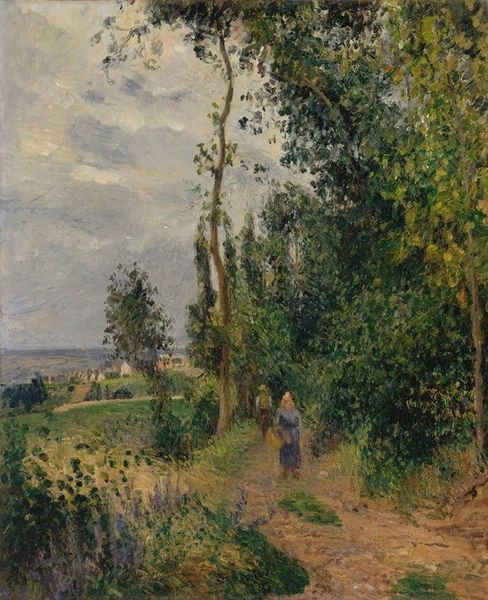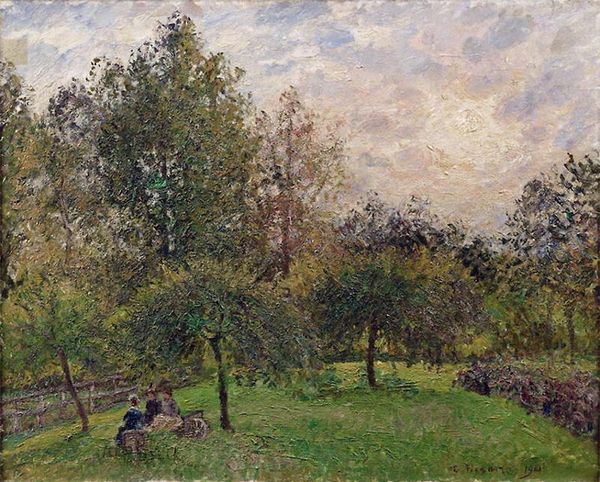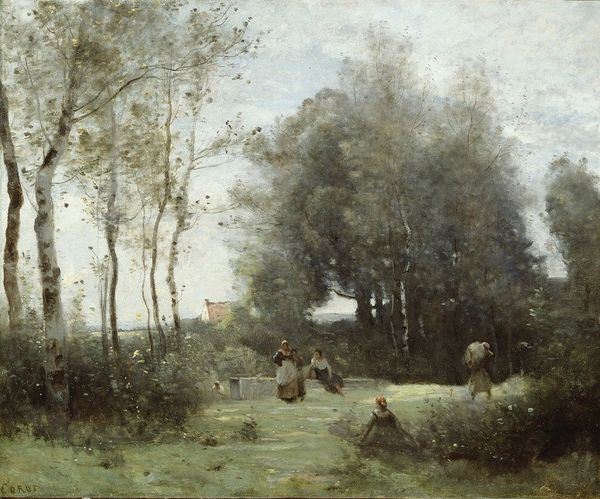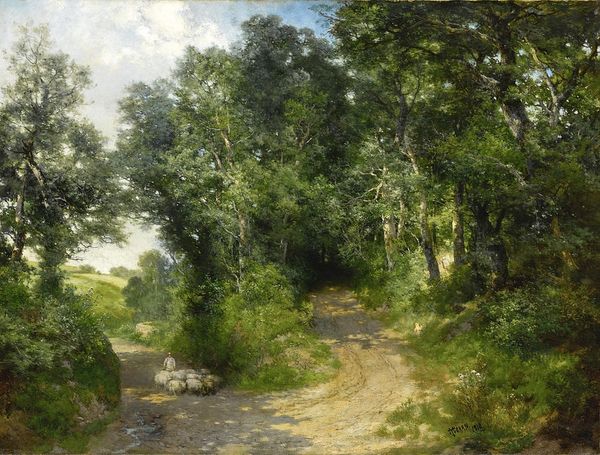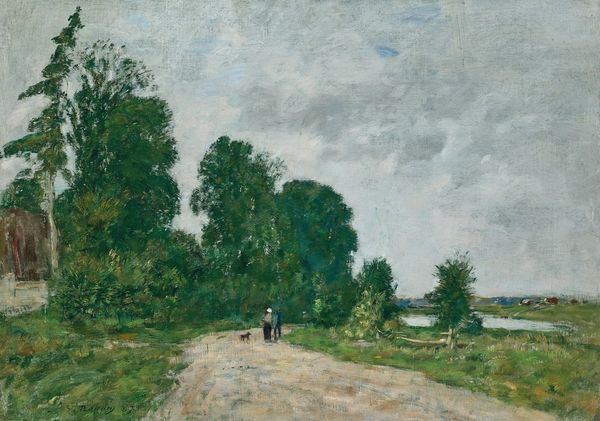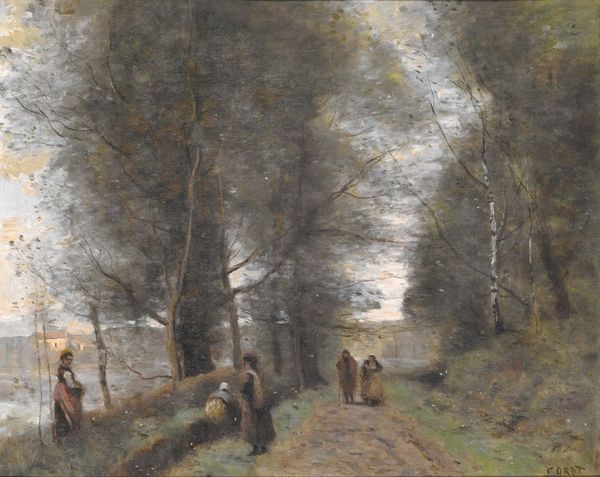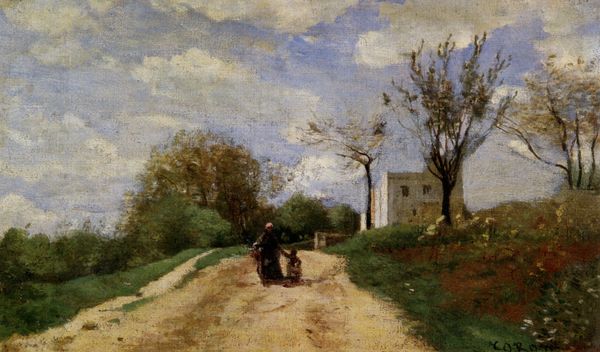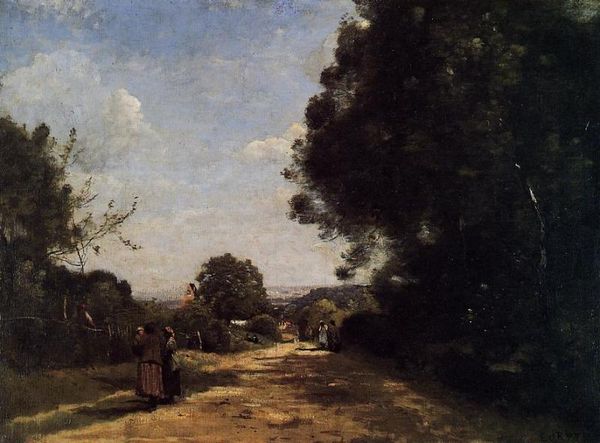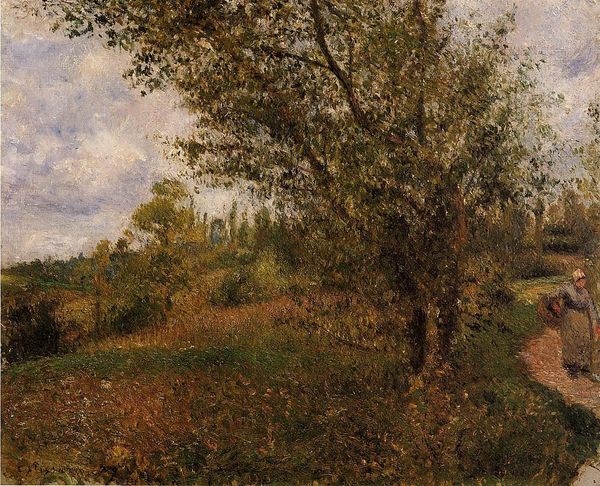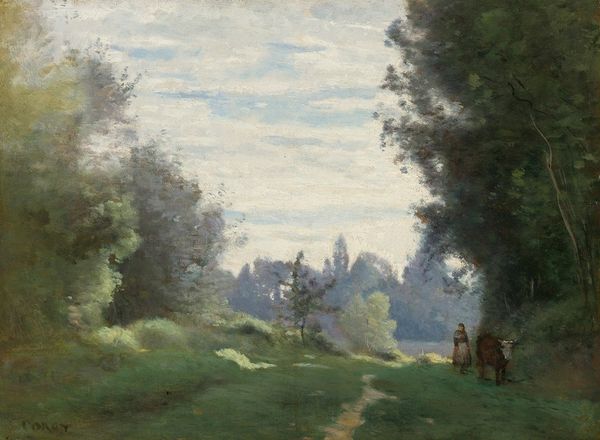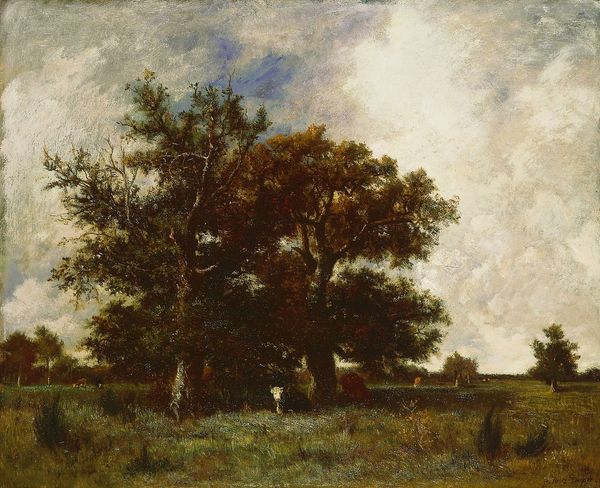
painting, plein-air, oil-paint
#
painting
#
impressionism
#
plein-air
#
oil-paint
#
landscape
#
impressionist landscape
#
figuration
#
oil painting
#
cityscape
#
genre-painting
Copyright: Public Domain: Artvee
Curator: Walking alongside Renoir's “A Road in Louveciennes,” created around 1870, you’re seeing Impressionism at its most intimately charming. Editor: Intimate indeed. There's a kind of sun-dappled domesticity to the scene, like a hazy memory of a Sunday afternoon stroll. I immediately notice how textured the road is, seemingly built of thickly applied layers of ochre, sienna, and pale grey—like an abridged geology. Curator: It's fascinating, isn't it? The textures emerge from this method that's very much in dialogue with Courbet's approach to painting with a palette knife, while also distinctly anticipating the ephemeral atmospheric renderings associated with Impressionism. It’s all about how paint *becomes* the subject; how strokes render light and shadow rather than strictly delineating forms. Editor: Which is exactly the shift! We can note how this method dovetails perfectly with shifts in manufacturing as paint began to be mass-produced and pre-mixed, enabling plein-air work as artists embraced a mobile creative practice centered in the real world instead of atelier settings and academic traditions. Curator: Precisely. And I wonder, seeing those figures clustered near the tree, do they know they're caught in time? Do *we* know we are? There's such a profound and almost accidental poetry in genre painting from this period; an acknowledgment that existence, like a quickly sketched landscape, is fleeting and precious. Editor: Beautifully put, though I suspect there were rather less ephemeral issues weighing on Renoir than "fleeting existence." Painting, frames, exhibition spaces...all these were commodified aspects of a Paris undergoing enormous structural transformations as Haussmannization pushed labor outside city centers, with formerly craft-based practices reorganized into factory productions and supply chains. Even *beauty* can be understood as something actively forged through processes of commodification. Curator: Maybe so. But still, something about the almost reckless abandon in those brushstrokes resonates. I love how the forms dissolve. Editor: I appreciate how Renoir demonstrates a mastery of new painting methods which enabled him to respond to changing economic, social and even environmental conditions with his chosen material: paint. Curator: It makes you think about all the invisible layers of work involved to simply *make* an image, doesn’t it? Editor: Exactly! Let’s keep that in mind.
Comments
No comments
Be the first to comment and join the conversation on the ultimate creative platform.


